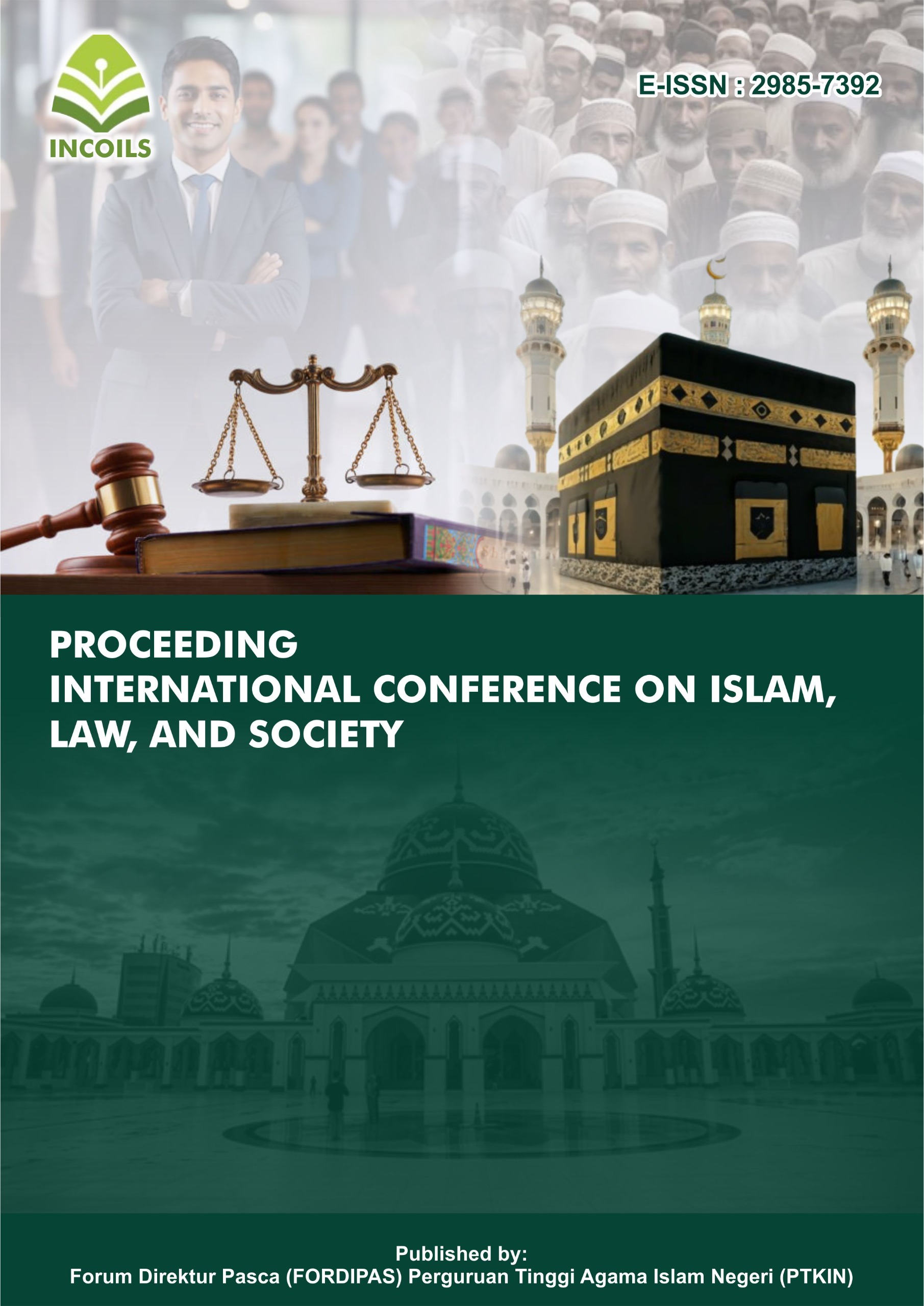The Effect of Utilizing Teknologı Informası And Learning Vırtual Berbasıs E-Learnıng On Mınat Learning Sıswa On Pai Bagi Sıswa Smk Nusantara 1 Comal Pemalang Subjects
DOI:
https://doi.org/10.70062/incoils.v2i1.29Keywords:
Information Technology, E-Learning, Student Learning InterestsAbstract
The learning problem at SMK Nusantara 1 Comal is that students are passive in the learning process because they are only required to listen and listen to the material presented by the teacher without any interaction. This causes students' interest in learning in PAI subjects to be relatively low. Judging from these problems, schools make PAI learning innovations using Information Technology and E-Learning-Based Learning.
The objectives to be achieved in the discussion of this thesis are 1. To prove the influence of the use of information technology in SMK Nusantara 1 Comal; 2. To prove the influence of e-learning-based virtual learning at SMK Nusantara 1 Comal Pemalang; 3. To prove the influence of the use of information technology and e-larning-based virtual learning on students' learning interests at SMK Nusantara 1 Comal.
In this research using a quantitative approach with the type of field research (Field Research). The independent variable is the Utilization of Information Technology and E-Learning-Based Virtual Learning. The Dependent Variable is Student Learning Interest. The sampling technique used was purposive sampling with the total population in this study was 95 students. Data collection methods used are questionnaires (questionnaire), observation and interviews. The analysis technique used is the Multiple Linear Regression technique using the SPSS 22 For Windows Version program.
The data processing results obtained the significance value of the influence of the use of information technology (X1) and e-learning-based virtual learning (X2) is 0.000 < 0.05, and the value of Fcalculates 146,515 > Ftable 3.09, it can be concluded that the Utilization of Information Technology and Virtual Learning Based on E-Learning simultaneously affects Students' Learning Interest in PAI Subjects at SMK Nusantara 1 Comal Pemalang with a percentage of 76.1%.
References
Arikunto, Suharsimi. (1997). Research Procedures an Approach to Practice. Jakarta: PT. Rineka Cipta.
Djamarah, Syaiful Bahri. (2008). Psychology of Learning. Jakarta: PT. Rineka Cipta.
Fauziah, Amni. (2017). The Relationship Between Learning Motivation and Learning Interest of Grade IV Students of SDN Poris Gaga 05 Tangerang City.
Ghozali, Imam. 2018. Multivariate Analysis Applications with IBM SPSS 25 Program. Diponegoro University Publishing Agency: Semarang.
Ghozali, Imam and Ratmono, Dwi. 2017. Multivariate and Econometric Analysis with Eviews 10. Diponegoro University Publishing Agency: Semarang.
Hamzah B. Uno and Nina Lamatenggo. (2011). Communication and Information Technology. Learning. Jakarta: PT Bumi Aksara. cet, 2
Hartanto, Wiwin. (2015). The Use of E-Learning as a Learning Medium
Hasbullah. (2005). Fundamentals of Education. Jakarta: PT. King Grafindo
Persada.
Islami, M.N. (2021). The Influence of the Use of Madrasah E-Learning Media on the Learning Interests of Class XII Students in the Subject of Islamic Cultural History at MAN 1 Gresik. [Online], UIN Sunan Ampel Surabaya. Available on: < http://digilib.uinsby.ac.id/50362/> [Accessed 28 December 2021]
Majid., Abdul. (2012). Learning and Learning Islamic Religious Education. PT Remaja Rosdakarya: Bandung
Majid, Abdul and Dian Andayani. (2006). Competency-Based Islamic Religious Education. PT Remaja Rosdakarya: Bandung
Marimba, Ahmad D. (1981). Special Methodology of Islam. Bandung: PT. Al-Maarif.
Oktarika, Dini. (2015). The influence of learning using e-learning media on students' interest in learning in e-learning courses in the p.tik study program. Journal of Informatics and Science Education. Vol. 4, No. 1
Rahmadani, D. (2020). Preliminary Study of Student Motivation in the Application of Virtual Learning in Distance Learning. Proceedings of the National Seminar on Biology FMIPA UNM: Biology Research Innovation and Its Learning in the Era of Independent Learning
Riduwan and Sunarto. (2007). Introduction to Statistics : Education, Social, Economic, Communication, and Business. London: Alfabeta.
Riyanto and Lantip Diat Prasojo. (2011). Educational Information Technology. Yogyakarta : Gava Media.
Sabri, M. Alisuf. (1999). The science of education. Jakarta: Guidelines for The Science of Jaya, 1999
Slameto. (2003). Learning and the Factors That Influence It. Jakarta: Rineka Cipta.
Somantri, A. and Muhidin, S.A. (2006). Application of Statistics In Research. Bandung: Pustaka Setia.
Sugiyono. (2008). Educational Research Methods. London: Alfabeta.
Sugiyono. (2006). Qualitative Quantitative Research Methods and R&D. Bandung: Alfabeta.
Sugiyono. (2010). Statistics for Education. London: Alfabeta.
Sugiyono. (2018). Mixed Methods. London: Alfabeta.
Sugiyono. (2018). Educational Research Methods : Quantitative, Qualitative and R&D. Approaches 27th Edition. London: Alfabeta.
Suyanto, M. (2005). Introduction to Information technology for business. Andi : Yogyakarta.
FIP-UP Education Science Development Team. (2011). Science & Applications of Education Part 2: The Science of Practical Education. Bandung: Imperial Bhakti Utama. 195
Warsita, Bambang. (2008) Learning Technology: Its Foundations & Applications. Jakarta: Rineka.
Downloads
Published
How to Cite
Issue
Section
License

This work is licensed under a Creative Commons Attribution-ShareAlike 4.0 International License.







